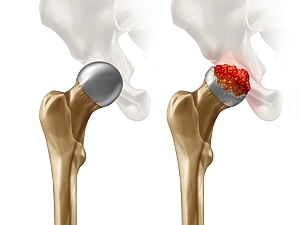The current standard for diagnosis and staging osteonecrosis of the femoral head (ONFH) is the 2019 Revised Version of Association Research Circulation Osseous (ARCO) Staging System, which does not require CT scans. However, some experts believe a CT scan is necessary for accuracy.
Richard Iorio, MD, vice-chair of Clinical Effectiveness, and the Richard D. Scott, MD distinguished chair in Orthopaedic Surgery in the Department of Orthopaedic Surgery at Brigham and Women’s Hospital, and colleagues recently completed the first study to address this divergence of opinion.
In Arthroplasty Today, they provide evidence that CT scans are not a useful adjunct to MRI when the Revised ARCO Staging System for ONFH is used for diagnosis and treatment decisions.
Methods
The team retrospectively reviewed data on 228 consecutive patients definitively diagnosed with ONFH at the Brigham between January 1, 2008, and December 31, 2018, based on CT and/or MRI images.
Results
78% of ONFH diagnoses were made first by MRI or by MRI and CT simultaneously:
- MRI first—129/228 diagnoses (57%)
- MRI and CT simultaneously—48/228 diagnoses (21%)
- CT first—51/228 diagnoses (22%), of which 48 (94%) were cancer diagnoses that required MRI for staging, and three were asymptomatic ONFH
All symptomatic ONFH cases were successfully staged and treated by MRI, and none required CT for management or treatment. MRI sufficiently staged both early- and late-stage ONFH, including in cases where the diagnosis was made by CT scans.
Conclusion
ONFH patients undergoing an MRI scan can be staged accurately according to the 2019 Revised ARCO Staging System without undergoing a CT scan. This is important when considering the exposure to ionizing radiation from unnecessary CT scans and the associated financial burden.
